I’ve found that starting the day with a nutrient-packed smoothie is one of my favorite ways to feel energized and ready to tackle whatever comes my way. Among the variety of smoothies I enjoy, the acai smoothie with milk holds a special place in my routine. Acai berries are not only known for their vibrant color and delicious taste but also for their abundance of antioxidants, fiber, and heart-healthy fats.
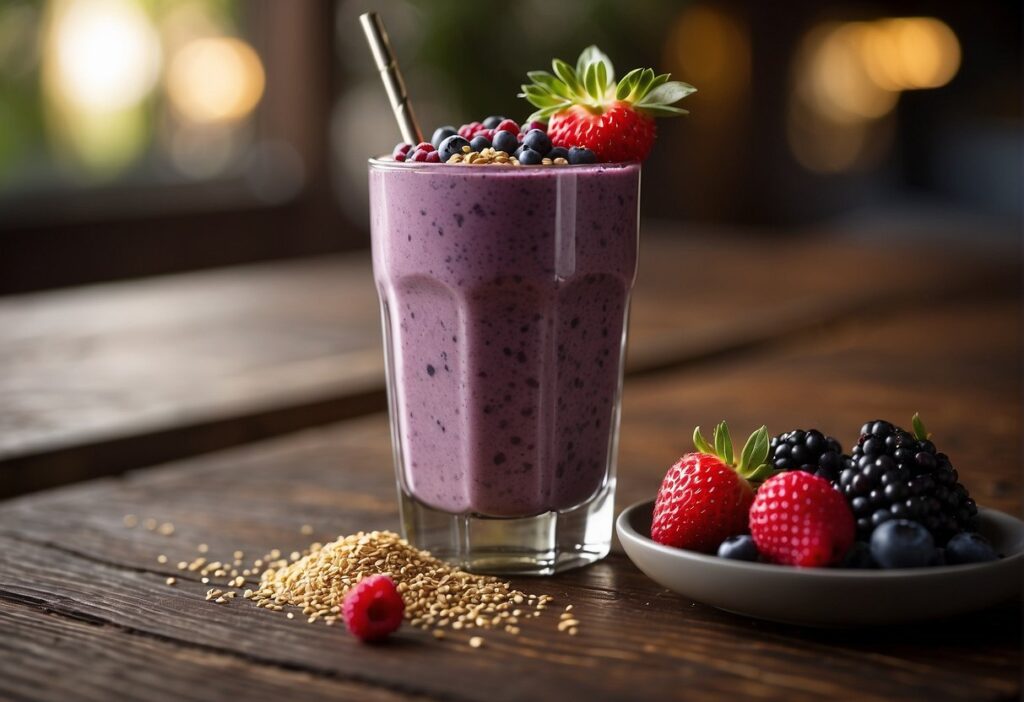
When I blend up an acai smoothie, I often reach for milk as my liquid base—it adds a creamy texture and a touch of sweetness without overwhelming the acai’s unique flavor. Whether it’s almond milk for a nutty undertone or coconut milk for a tropical twist, dairy or non-dairy varieties both work wonderfully. The combination of milky smoothness with the tart, slightly earthy taste of acai creates a beverage that’s both indulgent and good for me.
Making this smoothie at home is simple and quick, which is perfect for my often hectic mornings. I enjoy experimenting with different add-ins like frozen bananas or a mixture of berries to keep my taste buds happy. Plus, it’s satisfying to know that with each sip, I’m supporting my body with a wholesome choice.
Understanding Acai
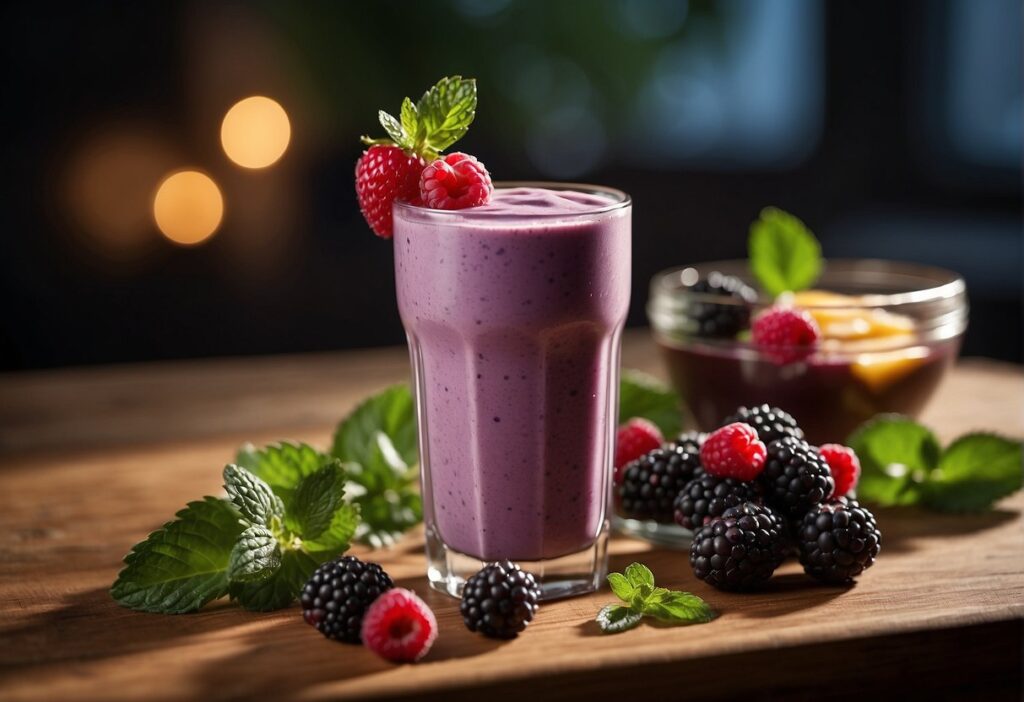
Have you heard about acai berries? I’m sure you’re curious, so let me share some facts about this vibrant purple fruit. Acai berries come from the acai palm tree, native to the rainforests of South America. Although they’re small in size, they pack a substantial nutritional punch.
The deep purple hue signals a high concentration of antioxidants—compounds that support in neutralizing free radicals in the body. Free radicals can cause cell damage, so antioxidants are essential for maintaining good health.
When it comes to nutrition, acai is impressive:
- Fiber: Great for digestion.
- Vitamin C: Supports the immune system.
They’re often labeled as a superfood because of these properties. Acai can be consumed as fresh fruits, but due to their perishable nature, they’re commonly found as acai powder or frozen puree outside of where they’re grown.
I usually add a scoop of acai powder to my smoothies for an extra health boost. It’s a simple way to integrate the benefits of acai into my diet without complications. If you’re trying out acai for the first time, you might enjoy its slightly tart, earthy flavor, which pairs wonderfully with sweet fruits and creamy milk in a smoothie.
Whether you opt for the powder or the frozen packs, integrating acai into your smoothie can bring a pop of flavor and a dose of antioxidants to your day. Always remember to choose unsweetened versions to keep your smoothie as healthy as possible.
Acai Smoothie Basics
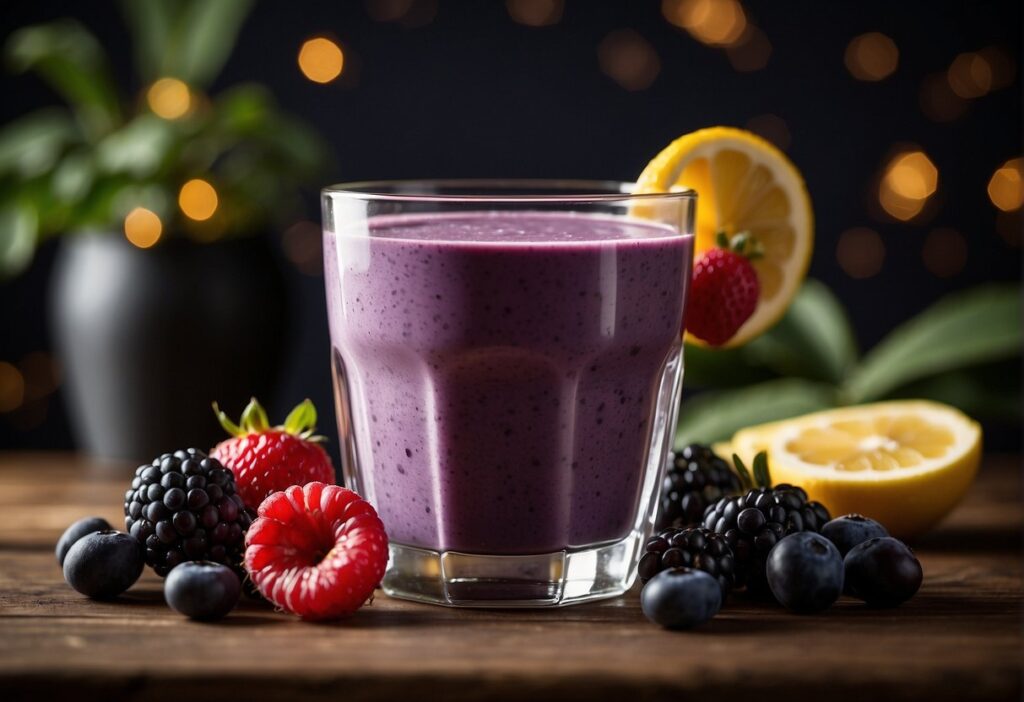
When I whip up an acai smoothie, my kitchen feels like a vibrant hub of health and flavor. Let’s talk about how I make them. First, I always ensure my blender is ready to go. It’s the key to a smooth and creamy texture.
Ingredients are straightforward. Acai typically comes in puree packs or powder form. I prefer packs, as they seem to offer a richer taste. For the milk, I usually opt for almond or coconut to keep things vegan, but any milk will do. Then, I gather my fruits. Frozen fruit like bananas, strawberries, and blueberries complement the acai beautifully and provide a natural sweetness.
Here’s a simple breakdown of what I toss into the blender:
- Acai puree packs or a scoop of acai powder
- A mix of frozen fruit (banana, berries, etc.)
- Milk of choice to achieve the desired consistency
I blend until everything looks smooth. Sometimes, I add a bit more milk if the mixture is too thick. That’s the fun part, you can adjust it to your preference!
Creating smoothies is all about personalizing the recipe to what tastes good to you. So, feel free to experiment with different fruits or add-ins like protein powder or greens. But if you’re new to acai smoothies, following a basic recipe is a great starting point. Enjoy your adventure with this nutritious and delicious drink!
Acai Smoothie Variations
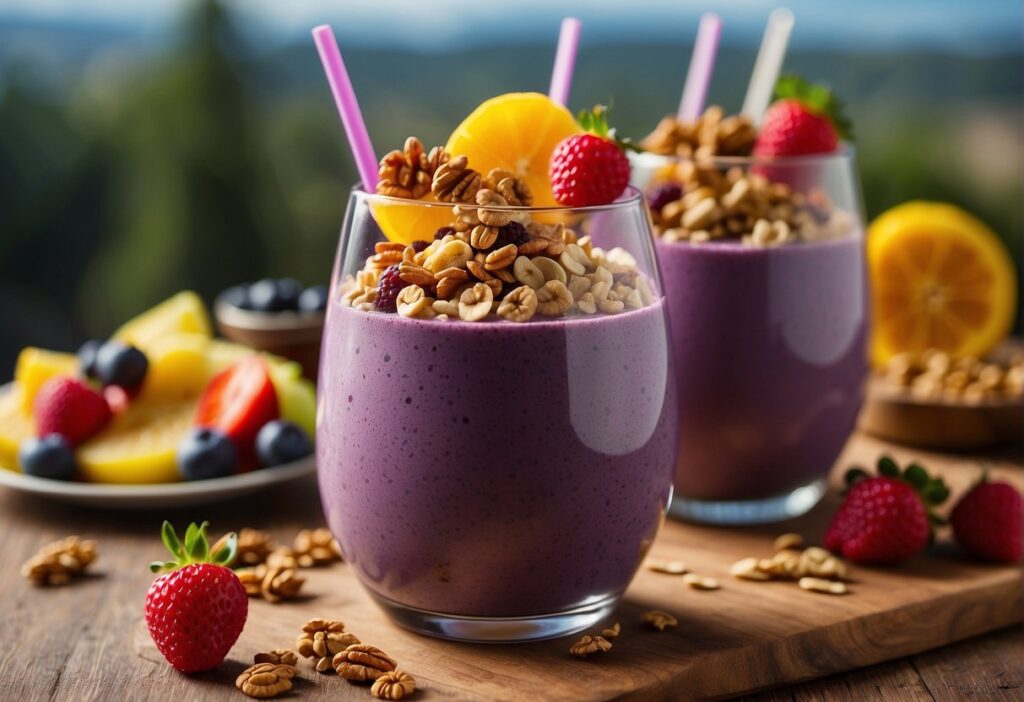
When I make an acai smoothie, I love to play with different variations to mix up flavors and health benefits. Using acai puree as a base, the possibilities for creating a delicious smoothie are nearly endless.
Milk Alternatives:
For those of us preferring plant-based milks or with lactose sensitivities, almond milk and coconut milk are my go-to choices. They add a light, creamy texture without overpowering the acai berry’s unique flavor. Sometimes, I opt for oat milk or soy milk, and I’ve found that they both lend a subtle sweetness that pairs well with the fruit.
Boosting with Berries:
Berries and acai are a match made in heaven. I throw in a handful of blueberries or strawberries to add extra antioxidants and a burst of freshness. Bananas also make a frequent appearance in my blender, as they create a smooth, rich consistency.
The Vegan Touch:
For a fully vegan treat, I skip traditional yogurts and use non-dairy yogurts or stick to just the non-dairy milk. To thicken the smoothie, avocado is a fantastic addition that also provides healthy fats, making my smoothie even more satisfying.
Extras for Excitement:
Who doesn’t love a bit of texture? I sometimes top my smoothie or smoothie bowl with nuts or a dollop of nut butter for protein. And for those days when I’m feeling green, a handful of kale sneaks in without changing the classic acai taste much.
| Ingredient | Role in Smoothie |
|---|---|
| Coconut Water/Oil | Hydration/Smooth texture |
| Frozen Berries/Banana | Chill factor & sweetness |
| Kale | Nutrient boost |
Experimenting with an acai smoothie is part of the fun. Whether sipping it through a straw or spooning into a thick and creamy smoothie bowl, the blend of non-dairy milk, fruits, and other goodies makes my acai smoothie an ever-evolving morning staple.
Nutritional Benefits and Considerations
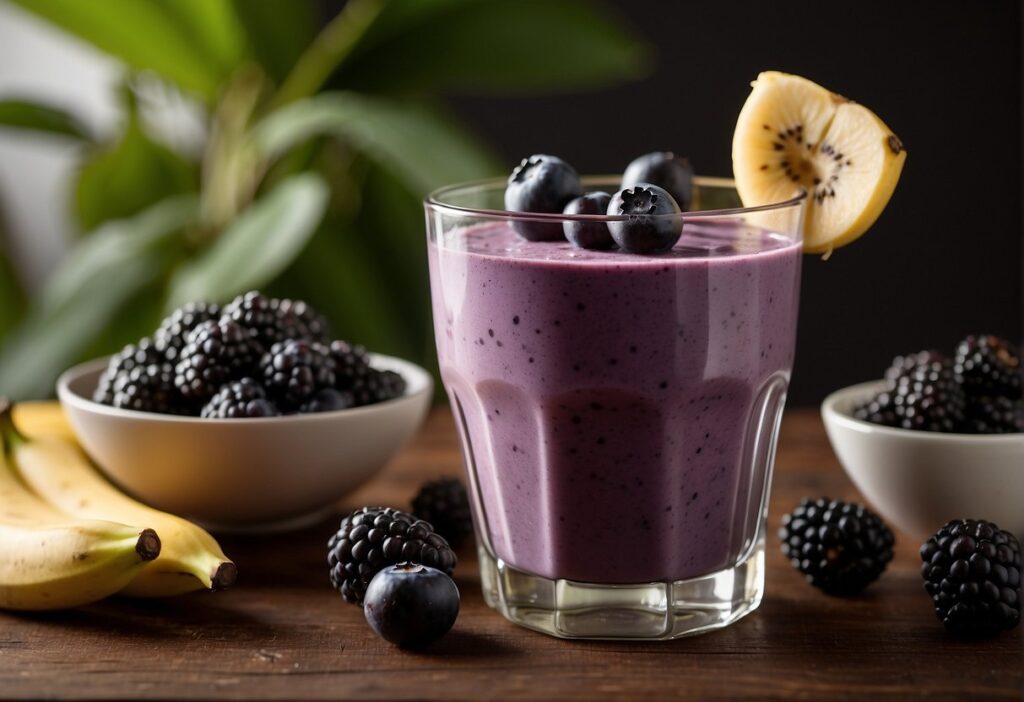
When I blend up a refreshing acai smoothie with milk, I’m conscious of the balance of nutrients it offers. Acai berries themselves are a nutrient-dense superfruit, notable for their antioxidant content. Incorporating milk, whether dairy or a plant-based alternative, can adjust the nutritional profile, particularly affecting the levels of protein, calcium, and vitamin A.
A standard 100-gram serving of açaí puree contains about 6 grams of carbohydrates, which includes 3 grams of dietary fiber and minimal sugar. This helps me feel full and supports digestive health. The same serving also has roughly 5 grams of healthy fats—the good kind that my body needs for energy and cell growth.
Here’s a quick nutrition breakdown of acai puree:
- Calories: Varied based on serving size and mix-ins
- Protein: 2g – important for muscle repair and growth
- Fiber: 3g – supports digestion and satiety
- Healthy Fats: 5g – essential for nutrient absorption and energy
If I choose to blend my acai with dairy milk, I’m adding to the calcium, potassium, and protein. However, I need to keep an eye on the saturated fat and calories. Using plant-based milks like almond or soy can lower these counts. Certain milks also fortify with additional nutrients that boost the health value even further.
Finally, while acai is low in sodium and iron, the milk I add can enhance these minerals. The combination results in a well-rounded, nutritional powerhouse that’s as tasty as it is wholesome. Just remember, the key is to use ingredients in moderation and enjoy the smoothie as part of a balanced diet.
Frequently Asked Questions
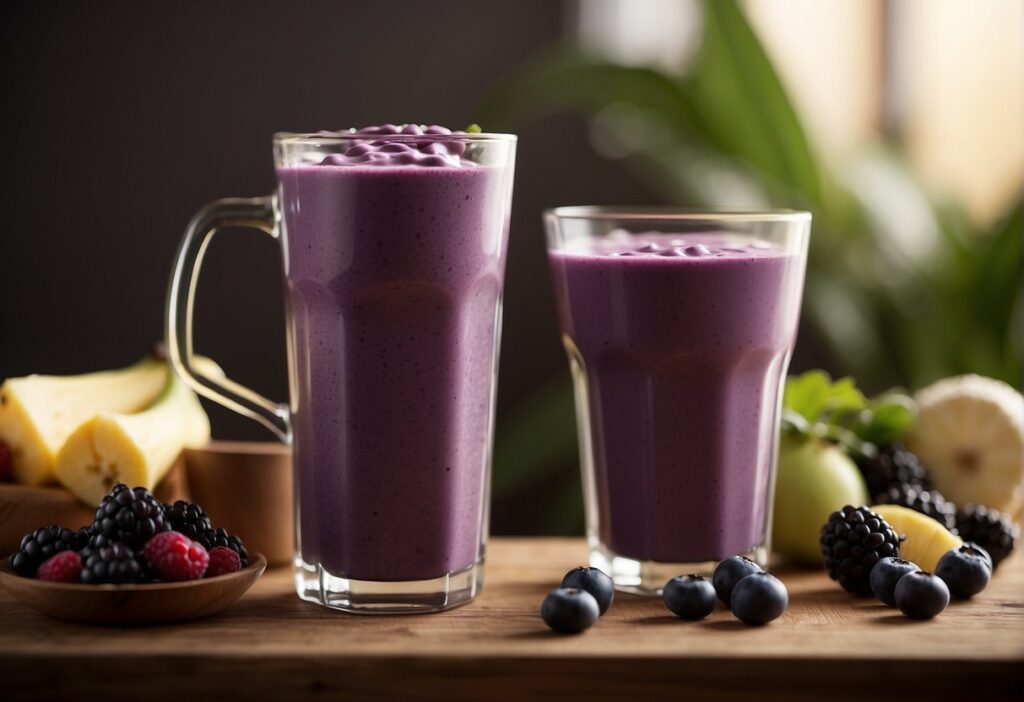
In this section, I’ll answer some common questions about making a delicious acai smoothie with milk. Whether you’re a smoothie novice or just looking to refine your technique, these insights will guide you through creating that perfect blend.
What ingredients are typically included in an acai smoothie with milk?
An acai smoothie with milk usually includes acai berry puree, milk (dairy or plant-based), and often a sweetener like honey. Other common ingredients are bananas or berries, which add natural sweetness and a creamy texture.
How do I make a healthy acai smoothie with milk?
To make a healthy acai smoothie with milk, use unsweetened acai puree, a choice of milk, and additional fruits like berries for extra nutrients. Avoid adding excess sugar by relying on the natural sweetness of the fruits.
Can I prepare an acai smoothie without bananas?
Absolutely. If you’re not a fan of bananas or are allergic to them, you can still enjoy an acai smoothie. Simply substitute a banana with mango or peach chunks for similar creaminess and sweetness.
What are some good additions to an acai and milk smoothie for extra flavor?
For an extra burst of flavor, add a dash of cinnamon, a scoop of peanut butter, or even some cocoa powder for a chocolatey touch. These ingredients not only enhance the taste but also offer their own health benefits.
How can an acai smoothie with milk contribute to a weight loss diet?
An acai smoothie with milk can be a good addition to a weight loss diet as it’s filling and rich in nutrients. The key is to use portion control and ensure that the smoothie contains a balance of fiber, protein, and healthy fats, which can aid in maintaining prolonged satiety.
Are there any benefits to using yogurt in an acai smoothie with milk?
Incorporating yogurt into your acai smoothie with milk can bring a boost of protein and probiotics. The addition of yogurt can help create a thicker and creamier texture, and if you opt for Greek yogurt, you’ll also be adding a tangy flavor to the mix.

